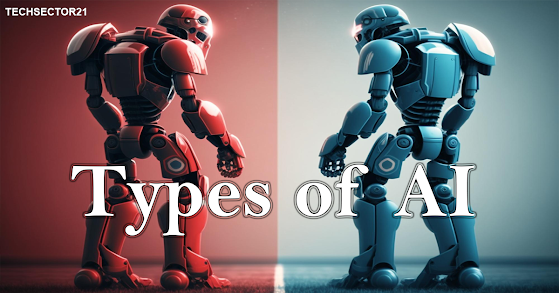Types of AI
Artificial Intelligence refers to the simulation of human intelligence in machines. It enables computers to perform tasks that typically require human intelligence, such as problem-solving, learning, decision-making, and understanding natural language. AI is not a singular entity; instead, it encompasses different levels of sophistication, known as Narrow AI, General AI, and Superintelligent AI.
Narrow AI (Weak AI)
Narrow AI, also known as Weak AI, is designed to perform specific tasks within a limited domain. It excels in its predefined area of expertise but lacks the ability to generalize its knowledge to other domains. Examples of Narrow AI include virtual assistants like Siri and Alexa, chatbots, and recommendation systems used by streaming platforms. These systems rely on algorithms and patterns to accomplish tasks efficiently, but they don't possess genuine understanding or consciousness.
General AI (Strong AI)
General AI, or Strong AI, represents a higher level of artificial intelligence. It possesses the cognitive abilities to understand, learn, and apply knowledge across various domains, much like a human. Unlike Narrow AI, General AI can perform any intellectual task that a human can do. However, achieving General AI remains a significant challenge due to the complex nature of human cognition and consciousness.
Superintelligent AI
Superintelligent AI is a theoretical concept where AI surpasses human intelligence in every aspect. This type of AI would possess the ability to outperform the best human minds in almost every field, from scientific research to creative endeavors. The development of Superintelligent AI raises ethical concerns and uncertainties, as it could potentially lead to outcomes that humans cannot predict or control.
The Distinctions Between the Types of AI
The key distinctions between these AI types lie in their capabilities and limitations. While Narrow AI focuses on specific tasks, General AI aims to replicate human cognitive abilities, and Superintelligent AI represents an advanced state of AI development that surpasses human intelligence.
Applications of Narrow AI
Narrow AI has found its way into numerous industries, enhancing efficiency and convenience. For instance, in the medical field, diagnostic AI systems help doctors interpret medical images with remarkable accuracy. Additionally, in finance, algorithmic trading relies on AI to analyze market data and execute trades at optimal times.
Challenges and Limitations of General AI
The path to achieving General AI is fraught with challenges. Replicating human-level cognition involves understanding emotions, intuition, and common sense – aspects that are difficult to quantify and replicate in machines. Furthermore, ensuring the ethical use of General AI is crucial to prevent potential misuse and unintended consequences.
The Ethical Implications of Superintelligent AI
The potential development of Superintelligent AI raises ethical dilemmas and concerns. As machines become more intelligent than humans, questions about control, accountability, and decision-making arise. Ensuring that AI acts in alignment with human values becomes increasingly complex as its capabilities expand.
AI in Our Daily Lives
AI has already become a part of our daily routines, from personalized recommendations on streaming platforms to voice assistants that help us manage tasks. This integration highlights how Narrow AI improves our experiences by understanding our preferences and behaviors.
AI's Role in Healthcare
The healthcare sector benefits from AI in diagnosing diseases, discovering new drugs, and personalizing treatment plans. AI's ability to analyze vast amounts of medical data leads to quicker and more accurate diagnoses, ultimately saving lives.
AI in Autonomous Vehicles
Autonomous vehicles rely on AI algorithms to navigate and make split-second decisions. These algorithms consider factors like traffic patterns, road conditions, and pedestrian movement, ensuring safer and more efficient transportation.
The Future of AI
The future of AI holds immense potential and challenges. As researchers strive to achieve General AI and address the ethical concerns surrounding Superintelligent AI, society must collectively work towards responsible AI development, ensuring its benefits are widespread and its risks mitigated.
Conclusion
In the ever-evolving landscape of artificial intelligence, understanding the different types of AI is crucial. From Narrow AI's domain-specific tasks to the aspirations of General AI and the complexities of Superintelligent AI, each type represents a unique stage in AI's journey. As AI continues to shape our world, striking a balance between innovation and ethical considerations will be paramount.

